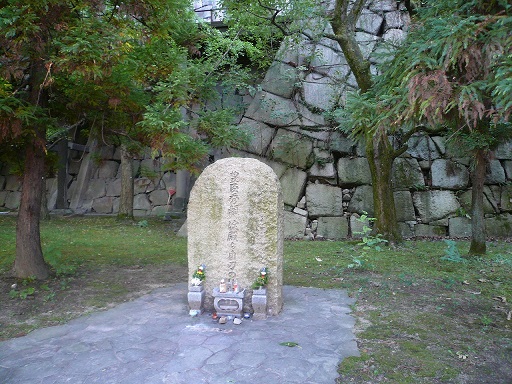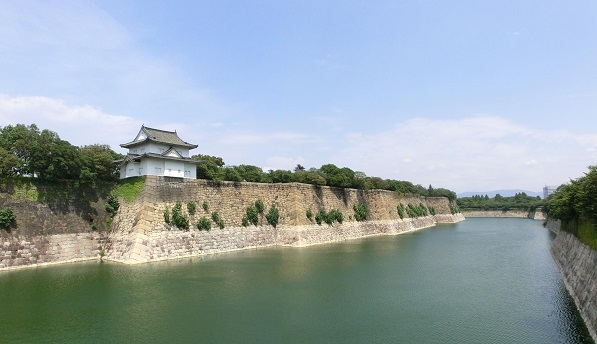After TOYOTOMI Hideyoshi died in 1598, his son, Hideyori, became the lord of Osaka Castle.
He was just five years old when Hideyoshi died.
Tention state had been continued between TOKUGAWA and TOYOTOMI, since the death of Hideyoshi.
In 1600, TOKUGAWA Ieyasu defeated ISHIDA Mitsunari, retainer of Hideyoshi.
TOKUGAWA Ieyasu became "Shogun" and he opened his government, "Edo Bakufu" in Edo, now Tokyo, in east Japan.
Finally, TOKUGAWA Ieyasu and his son, Hidetada, defeated TOYOTOMI Hideyori in the siege of Osaka in 1615.
The original Osaka Castle was destroyed by the siege.
TOKUGAWA Hidetada completely rebuilt Osaka Castle in 1629, after the ruin of the TOYOTOMI clan.
The purpose of rebuilding Osaka Castle was to display the power of TOKUGAWA and to make known to the people in Osaka that the era of the TOYOTOMI clan was completely finished.
The rebuilt castle tower of Osaka Castle was destroyed by fire caused by flash-to-ground in 1665.
Almost all buildings of Osaka Castle were destroyed by a battle at the end of the Edo Age in 1868.
The current main building of Osaka Castle is the third castle tower rebuilt in 1931.
Currently, the main tower is an historical museum and many visitors come to the building.
To the north of the main building, a small stone monument is located at "Yamazato" Bailey.
Memorial Monument of TOYOTOMI Hedeyori and YODO-dono

This is the memorial monument of TOYOTOMI Hedeyori and his mother "YODO-dono", who died in 1615, when the original Osaka Castle was destroyed in the siege of Osaka.
The main building of Osaka Castle is very crowed, but few people are here.
Osaka Castle was one of the largest and firmest defensive structured castles in Japan.
A wide moat and high stone walls are examples to demonstrate such a firm defensive structure of Osaka Castle.
Minami Sotobori Moat and Sixth Corner Tower

Only one corner tower remains, but there used to be five corner towers on this side.
The view of the original castle should be very regal and impressive.

 Home Page in Japanese: "Shane's HomePage"
Home Page in Japanese: "Shane's HomePage"

 Home Page in Japanese: "Shane's HomePage"
Home Page in Japanese: "Shane's HomePage"